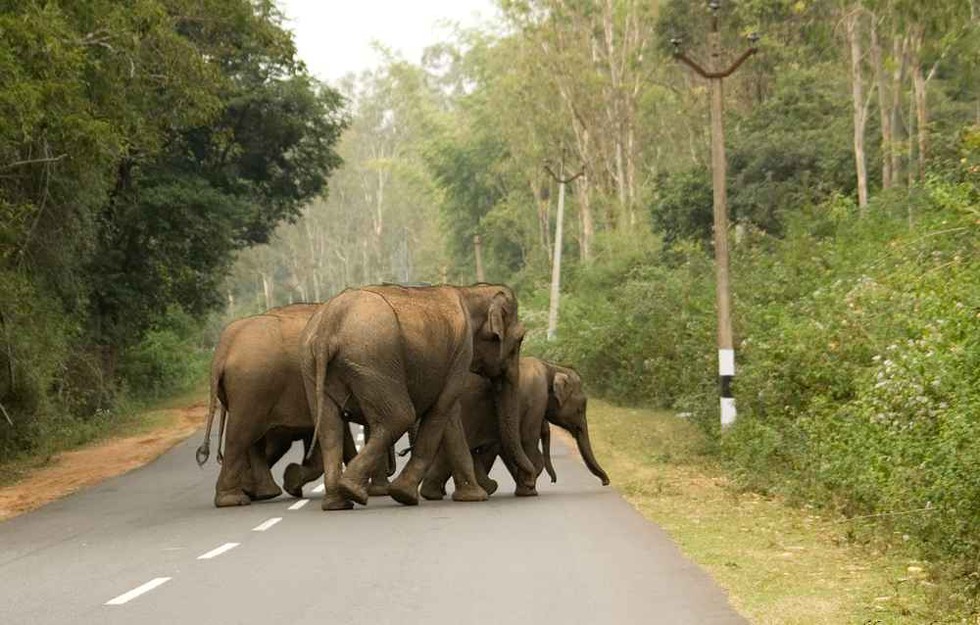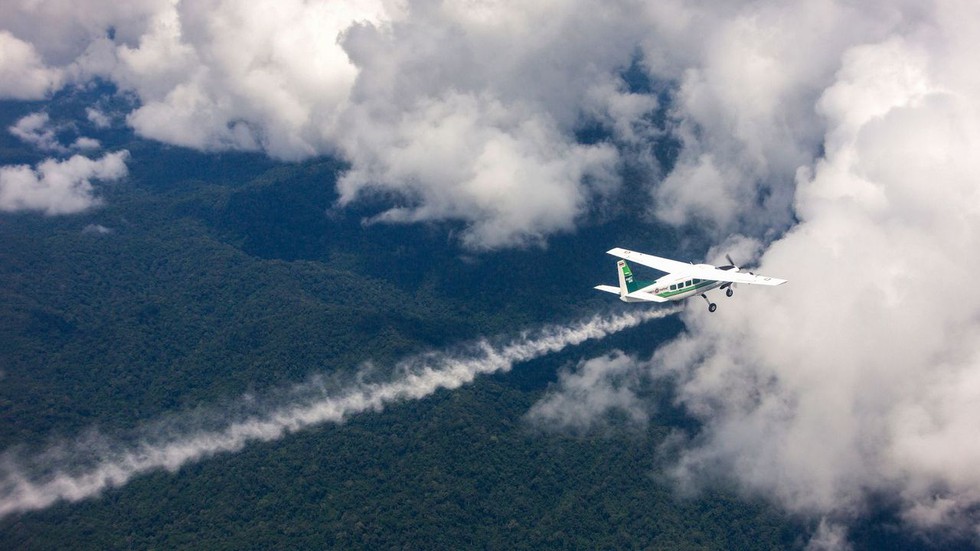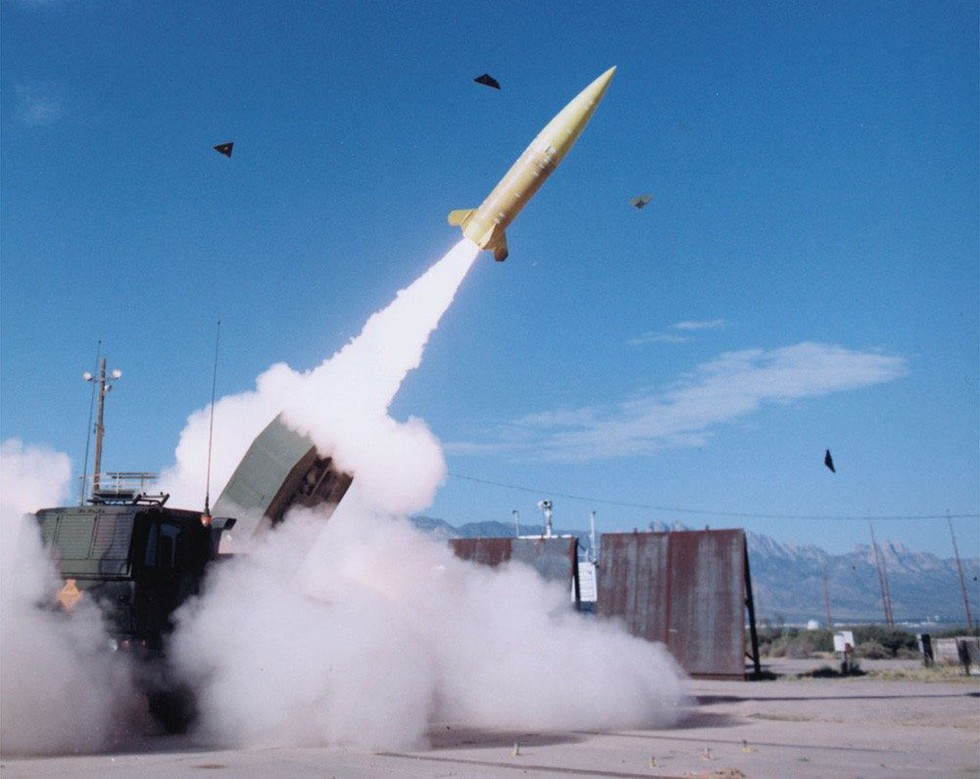1. Exercise Sanyukt Vimochan
Recently, the Indian Army successfully conducted the Exercise, 'Sanyukt Vimochan 2024' at Ahmedabad and Porbandar on 18-19 November 2024.

About Exercise Sanyukt Vimochan:
- It is a multilateral annual joint Humanitarian Assistance and Disaster Relief (HADR) Exercise.
- The exercise, conducted by the Konark Corps of Southern Command of Indian Army, was conducted at Ahmedabad and Porbandar, Gujarat.
- The inaugural event of the exercise at Ahmedabad featured a Tabletop Exercise, focusing on the theme of 'Cyclone in Coastal Region of Gujarat'. Representatives from National Disaster Management Authority (NDMA), Gujarat State Disaster Management Authority (GSDMA), Meteorological Department and FICCI attended the event along with Indian Armed Forces officials.
- It is aimed at addressing gaps in interagency integration and cooperation, ensuring a swift and coordinated response to natural disasters.
- It also witnessed a Multi-Agency Capability Demonstration held at Chowpatty Beach at Porbandar on 19 November 24.
- The Multi-Agency Capability Demonstration featured various agencies practicing coordinated logistics, rapid response and effective disaster management strategies in a simulated cyclone scenario.
- This event highlighted the collaborative efforts of the Indian Army, Indian Navy, Indian Airforce, Indian Coast Guard, National Disaster Response Force, State Disaster Response Force & other Central & State Agencies in addressing natural disasters.
- 15 Senior officials and representatives from Nine Friendly Foreign Countries from the Gulf Cooperation Council, Indian Ocean Region and Southeast Asia attended the event.
- Significance: It has not only enhanced our national disaster response capabilities but also added valuable contributions to the global dialogue on Humanitarian Assistance and Disaster Relief.
Source : INDIAN ARMY SUCCESSFULLY CONCLUDES MULTI AGENCY DISASTER RELIEF EXERCISE 'SANYUKT VIMOCHAN 2024'
2. Bharat National Cyber Security Exercise (Bharat NCX 2024)
The Bharat National Cyber Security Exercise (Bharat NCX 2024) was inaugurated at a high-profile ceremony organized by the National Security Council Secretariat (NSCS) in collaboration with Rashtriya Raksha University (RRU) in New Delhi recently.

About Bharat NCX 2024:
- It is a landmark initiative to fortify India’s cybersecurity resilience.
- It is being conducted by the National Security Council Secretariat (NSCS) Government of India in strategic partnership with Rashtriya Raksha University (RRU).
- This flagship event serves as a unifying platform for over 300 participants, representing a diverse spectrum of government agencies, public organizations, and the private sector, all resolutely committed to the safeguarding of critical information infrastructure through training sessions, Live Fire, and Strategic exercises.
- Key Features:
- The exercise includes immersive training on cyber defense and incident response, live-fire simulations of cyberattacks on IT and OT systems, and collaborative platforms for government and industry stakeholders.
- A Strategic Decision-Making Exercisewill bring together senior management from across sectors to simulate decision-making in a national-level cyber crisis, enhancing their ability to respond to high-pressure situations with strategic acumen.
- The CISO’s Conclavewill feature Chief Information Security Officers from the government, public, and private sectors sharing insights, participating in panel discussions, and exploring the latest trends and government initiatives in cybersecurity.
- On the sidelines, the Bharat Cybersecurity Startup Exhibitionwill showcase innovative solutions from Indian startups, emphasizing their role in enhancing the nation's cybersecurity infrastructure.
- The exercise also highlights leadership engagement and capacity building, fostering a unified approach to emerging cyber challenges.
3. World Anti-Doping Agency (WADA)
India will host a 4-day Global Learning and Development Framework (GLDF) Results Management Training in collaboration with the World Anti-Doping Agency (WADA) in New Delhi.

About World Anti-Doping Agency (WADA):
- It was established in 1999 as an international independent agencyto lead a collaborative worldwide movement for doping-free sport.
- Its governance and fundingare based on an equal partnership between the sport movement and governments of the world.
- Its primary role is to develop, harmonize, and coordinate anti-doping rules and policies across all sports and countries.
- Its key activities include scientific research, education, the development of anti-doping capacities, and monitoring the World Anti-Doping Code (Code), the document harmonizing anti-doping policies in all sports and all countries.
- Formation:
- After the events that shook the world of cycling in the summer of 1998, the International Olympic Committee (IOC) decided to convene a World Conference on Doping.
- The First World Conference on Doping in Sport held in Lausanne, Switzerland, on February 2-4, 1999, produced the Lausanne Declaration on Doping in Sport.
- It provided for the creation of an independent international anti-doping agency to be operational for the Games of the XXVII Olympiad in Sydney in 2000.
- Pursuant to the terms of the Lausanne Declaration, the WADA was established on November 10, 1999, in Lausanne to promote and coordinate the fight against doping in sport internationally.
- WADA is a Swiss private law, not-for-profit foundation.
- Its seat is in Lausanne, Switzerland, and its headquarters are in Montreal, Canada.
- Governance Structure:
- A 42-member Foundation Board (Board), the agency’s highest policy-making body, is jointly composed of representatives of the Olympic Movement(the IOC, National Olympic Committees, International Sports Federations, and athletes) and representatives of governments from all five continents.
- A 16-member Executive Committee (ExCo), to which the Board delegates the management and running of the agency, including the performance of all its activities and the administration of its assets.
4. Key Facts about Sabarmati River
The Sabarmati Riverfront development project, which aims to transform around 38 kilometres of riverbanks from Ahmedabad to Gandhinagar across seven phases, has begun monetizing its first phase, covering around 11 kilometres on either side of the river.

About Sabarmati River:
- It is a monsoon-fed river that originates in the Aravalli Hills of Rajasthan near Udaipur and meets in the Bay of Khambhat in Arabian sea.
- The Sabarmati basin extends over the states of Rajasthan and Gujarat, having an area of 21,674 sq.km with a maximum length and width of 300 km and 150 km.
- It flows north-south through Ahmedabad, bisecting the city into its western and eastern halves.
- It covers a total distance of 371 km, out of which 48 km is traversed in Rajasthan and the remaining 323 km in Gujarat.
- Its total catchment area is 21,674 sq. km.
- It is bounded by the Aravalli Hills in the north and north-east, the Rann of Kutch in the west, and the Gulf of Khambhat in the south.
- The major part of the basin is covered with agriculture, accounting for 74.68% of the total area.
- Tributaries: Its principal tributaries joining from left are the Wakal, the Hathmati, and the Vatrak, whereas the Sei joins the river from right.
5. Sathyamangalam Tiger Reserve
An initiative taken by the Forest Department to conduct evening coaching classes for school children in 10 tribal hamlets located within the Sathyamangalam Tiger Reserve (STR) has significantly enhanced their learning skills.

About Sathyamangalam Tiger Reserve:
- Location: It is located at the junction of the Eastern and the Western Ghats in the Nilgiri Biosphere Reserve, in the Erode District of Tamil Nadu.
- Its area is contiguous with the Mudumalai Tiger Reserve, Bandipur Tiger Reserve (Karnataka), and BR Tiger Reserve and Wildlife Sanctuary (Karnataka).
- Together, these reserves-forming the Nilgiris biosphere landscape, have the biggest tiger population in the world, at over 280 tigers.
- Terrain: It is hilly and undulated,with altitudes ranging between 750 m and 1649 m.
- Vegetation: It consists of southern tropical dry thorn forests, mixed deciduous forests, semi-evergreen forests, and Riparian forests.
- Climate:
- It is subtropical and dry.
- The summers are hot and dry; the monsoons are wet and cooler, with river flooding.
- Rivers: Some of the prominent rivers in the region include the Bhavani, Moyar, and Noyyal
- Tribal Communities: It is home to several indigenous tribal communities, including the Irula and Kurumba
- Flora: Common species of trees and shrubs found are Albizia amara, Chloroxylon swietenia, Gyrocarpus jacquini, Neem, Tamarind, Sandalwood, Randi dumetorum, Zizyphus, and associates.
- Fauna: The major species are Elephant, Tiger, Panther, Sloth bear, Gaur, Black Buck, Spotted deer, Wild boar, Black naped hare, Common langur Nilgiri langur, Striped neck mongoose, and Bonnet macaque.
6. What are Lipids?
According to a recent study, a low metabolic flexibility to lipids in skeletal muscle may promote ectopic lipid accumulation, thus inducing metabolic disturbances.

About Lipids:
- They are fatty, waxy, or oily compounds that are essential to many body functions and serve as the building blocks for all living cells.
- They help regulate hormones, transmit nerve impulses, cushion organs, and store energy in the form of body fat.
- They’re part of the cell membranes and help control what goes in and out of the
- They are mainly composed of hydrocarbons in their most reduced form, making them an excellent form of energy storage, as when metabolized, the hydrocarbons oxidize to release large amounts of energy.
- They are not soluble in water as they are non-polar, but are thus soluble in non-polar solvents such as chloroform.
- The three main types of lipids are phospholipids, sterols (including the different types of cholesterol), and triglycerides(which account for over 95% of lipids in food).
- They are found in higher quantities in fried foods, animal fats, and dairy products like cream, butter, and cheese.
- Though lipids are important for the health, consuming excessive amounts in food can lead to diseases like atherosclerosis("hardening of the arteries"), hypertension (high blood pressure), and coronary artery disease.
7. What is High-Altitude Sickness?
Every year, numerous tourists succumb to the effects of high-altitude sickness in the pristine but challenging inner Himalayas.

About High-Altitude Sickness:
- High-altitude sickness, or Acute Mountain Sickness (AMS), occurs when the body cannot acclimatise to high elevations, typically over 8,000 feet (2,400 metres).
- As altitude increases, the air pressure and oxygen levels decrease, leading to hypoxia — a shortage of oxygen in the body’s tissues.
- Symptoms:
- Early symptoms of AMS include headache, nausea, fatigue, and shortness of breath.
- If left untreated, it can escalate into high-altitude pulmonary edema (HAPE), a life-threatening condition where fluid accumulates in the lungs, or high-altitude cerebral edema (HACE), where fluid collects in the brain.
- Both conditions require immediate medical intervention, and descent to lower altitudes is often the only way to prevent fatal outcomes.
- At higher altitudes, the body tries to adjust by increasing the breathing rate, which can cause hyperventilation, and produce more red blood cells to carry oxygen, which thickens the blood and strains the heart.
- In cases of HAPE, fluid accumulation in the lungs exacerbates breathing difficulties, while HACE causes symptoms like confusion, hallucinations, and even coma.
- The primary cause of high-altitude sickness is rapid ascent without allowing the body time to acclimatise. Gradual ascent, which allows the body to adapt to lower oxygen levels, is the best way to prevent high-altitude illnesses.
- Treatment: The most effective treatment is immediate descent to lower altitudes. Symptoms usually improve significantly with a descent of 300-1,000 metres. Supplemental oxygen or a portable hyperbaric chamber can also help alleviate symptoms of AMS and HACE in emergencies.
8. Binar Space Program
Recently, three tiny Australian satellites from Curtin University’s Binar Space Program burned up in Earth’s atmosphere due to solar activity.

About Binar Space Program:
- It is a satellite research program operating out of Curtin University.
- It aims to advance our understanding of the Solar System and lower the barrier for operating in space.
- The program began operations with its first satellite, Binar-1, in September 2021. This was less than a year into solar cycle 25 when solar activity was relatively low.
- In these conditions, the ten-centimetre cube satellite started at an altitude of 420 km and survived a full 364 days in orbit.
- The program’s follow-up mission – Binar-2, 3, and 4 – were three equally sized CubeSats. However, they were expected to last approximately six months owing to the extra surface area from new deployable solar arrays and a forecast increase in solar activity.
- As the Sun kicked into high gear, these three satellites burned up in the atmosphere much sooner than expected.
What is solar activity?
- It includes phenomena such as sunspots, solar flares and solar wind – the stream of charged particles that flows toward Earth.
- This activity is a product of the Sun’s ever-changing magnetic field, and approximately every 11 years, it completely flips. At the midpoint of this cycle, solar activity is at its highest.
- In the last few months, indicators of solar activity were more than one and a half times higher than predictions for this point in the current cycle, labelled solar cycle 25.
- Impacts:
- Higher solar activity means more solar flares and stronger solar wind – resulting in a higher flux of charged particles that can damage or disrupt electrical components on satellites.
- It also means an increase in ionising radiation, resulting in a higher dose for astronauts and pilots, and potential disruptions to long-distance radio communications.
- But for satellites in low Earth orbit, the most consistent effect of solar activity is that the extra energy gets absorbed into the outer atmosphere, causing it to balloon outward.
- As a result, all satellites less than 1,000 km from Earth experience a significant increase in atmospheric drag (This is a force that disrupts their orbit and causes them to fall towards the planet’s surface).
- Notable satellites in this region include the International Space Station and the Starlink constellation. These satellites have thrusters to counteract this effect, but these corrections can be expensive.
What is Space weather?
- Space weather refers to the environmental effects that originate from outside our atmosphere (mostly the Sun). It affects us on Earth in a variety of noticeable and unnoticeable ways.
- Space weather, and solar activity in particular, also creates additional challenges for satellites and satellite operators.
9. What is Cloud seeding?
Recently, Delhi is grappling with severe air pollution, the concept of cloud seeding has emerged as a potential short-term solution to combat the hazardous air quality.

About Cloud seeding:
- Cloud seeding, also known as artificial rain, is a weather modification technique that aims to enhance precipitation by introducing substances into clouds to stimulate rainfall.
- How is it done?
- The science behind cloud seeding involves dispersing materials such as silver iodide, potassium iodide, or dry ice into clouds to encourage the formation of rain or snow.
- These particles serve as nuclei for water droplets to form around, potentially leading to increased precipitation.
- The process can be carried out using aircraft, ground-based generators, or even rockets in some cases.
- Cloud seeding is done to increase the radius of the cloud droplets so that they will grow bigger and because of gravity, they will come down as rainfall.
- In the context of air pollution, cloud seeding is seen as a potential method to "wash away" particulate matter and other pollutants from the air.
- The theory is that increased rainfall could help settle dust and other airborne particles, temporarily improving air quality.
- Challenges: Suitable atmospheric conditions are necessary for the technique to be effective, including the presence of clouds with sufficient moisture.
10. Army Tactical Missile System
Recently, Russia's Defence Ministry said that Ukraine fired six US-made Army Tactical Missile System (ATACMS) at Russia’s Bryansk region.

About Army Tactical Missile System:
- It is a conventional surface-to-surface artillery weapon system capable of striking targets well beyond the range of existing Army cannons, rockets, and other missiles.
- It is manufactured by the US defense company Lockheed Martin.
- It is also designated M39 by the US Army, and its Department of Defence (DoD) designation is MGM-140.
- The missile first saw use during the 1991 Persian Gulf War.
- This weapon's known operators other than the US are Bahrain, Greece, South Korea, Taiwan, and the United Arab Emirates.
- Features:
- ATACMS are 24/7, all-weather, surface-to-surface, inertially guided ballistic missiles.
- Range: It has a range of about 190 miles (305 km).
- Propulsion:Single-stage, solid propellant.
- These missiles are fired from the High Mobility Artillery Rocket System(HIMARS) and the M270 Multiple Launch Rocket System (MLRS) platforms.
- It has the ability to carry cluster munitions,which destroy a targeted area by releasing hundreds of bomblets instead of a single warhead.


























































































































































.png)
.png)
.png)
.png)
.png)


.png)
.png)
.png)





.png)
.png)






.png)
.png)
.png)
.png)
.png)
.png)
.png)
.png)
.png)

.png)







.png)
.png)


.png)
.png)
.png)


.png)

.png)
.png)





.jpg)

.png)
.png)


.png)

.png)
.png)
.png)

.jpg)

.jpg)


.png)

.png)
.png)
.png)
.png)
.png)
.png)
.png)
.png)
.png)
.png)




.png)

.png)





.png)
.png)
.png)
.png)
.png)
.png)
.png)
.png)
.png)
.png)
.jpg)
.jpg)

.png)
.png)
.png)
.png)
.png)
.png)
.png)
.png)
.png)
.png)
.png)
.png)
.png)
.png)
.png)
.png)
.png)
.png)
.png)
.png)
.png)
.png)



.png)
.png)

.jpg)
.jpg)


.jpg)
.jpg)
.jpg)
.jpg)
.jpg)

.jpg)








.jpg)
.jpg)
.jpg)
.jpg)
.jpg)

















.jpg)
.jpg)







.jpg)


















.jpg)
.jpg)






























































































.jpg)
.jpg)


























.jpg)

.jpg)










.jpg)








.jpg)




.jpg)










.jpg)


















.jpg)












































.jpg)














.jpg)
.jpg)
.jpg)





.jpg)

.jpg)
.jpg)





































































.jpg)


































.jpg)
.jpg)
















































.jpg)












.jpg)


.jpg)




.jpg)
.jpg)
.jpg)

.jpg)
.jpg)
.jpg)
.jpg)

.jpg)
.jpg)
.jpg)

.jpg)
.jpg)
.jpg)
.jpg)
.jpg)
.jpg)
.jpg)
.jpg)

.jpg)


.jpg)
.jpg)
.jpg)
.jpg)
.jpg)
.jpg)
.jpg)
.jpg)
.jpg)
.jpg)











.jpg)
.jpg)





.jpg)
.jpg)
.jpg)
























.jpg)
























.jpg)









.jpg)
.jpg)







.jpg)
.jpg)









































.jpg)
.jpg)
.jpg)
.jpg)
.jpg)

.jpg)
.jpg)
.jpg)
.jpg)
.jpg)


.jpg)
.jpg)
.jpg)
.jpg)
.jpg)

.jpg)
.jpg)
.jpg)
.jpg)
.jpg)
.jpg)
.jpg)
.jpg)
.jpg)
.jpg)
.png)

.png)
.png)

.png)
.png)
.png)
.png)


.jpg)
.jpg)

.jpg)
.jpg)
.jpg)

.png)
.png)
.png)
.png)
.png)
.png)
.png)

.png)
.png)
.png)
.png)
.png)
.png)
.png)
.png)
.png)
.png)





































































-min.png)



.png)




.png)








































